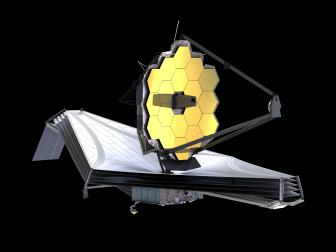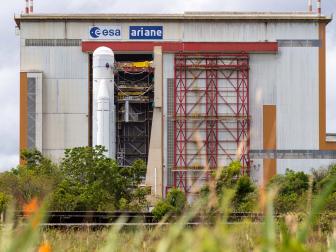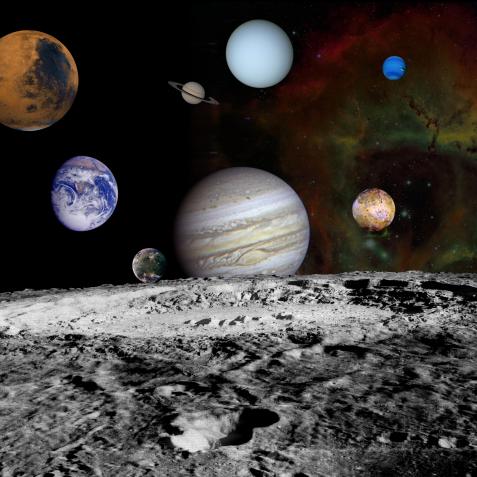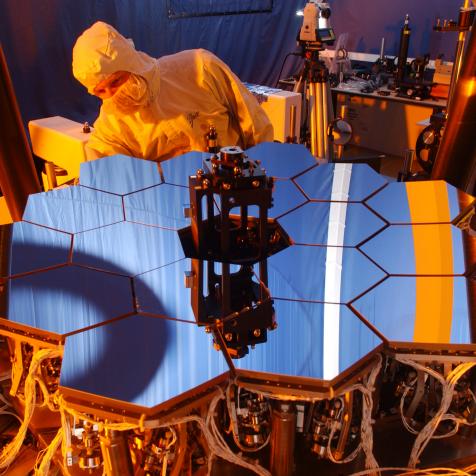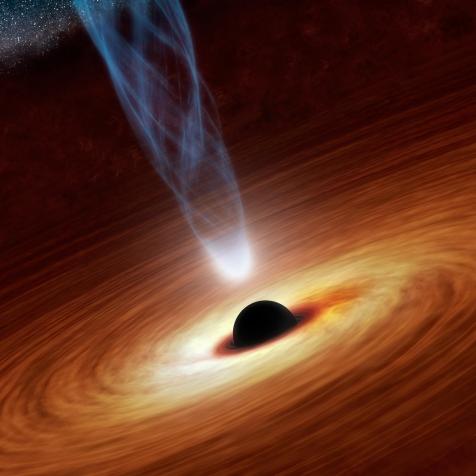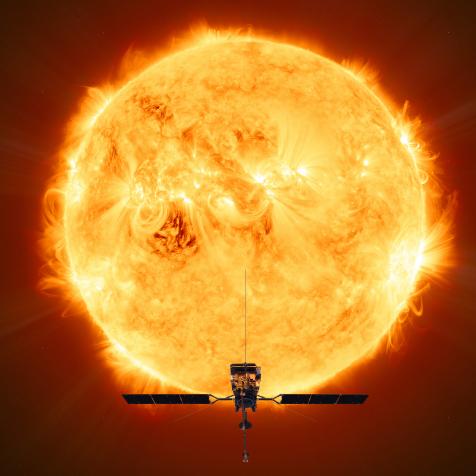
NASA/Bill Ingalls
James Webb Space Telescope Successfully Reached Its Final Destination
Nearly a month after the James Webb Space Telescope launched from French Guiana on December 25, the telescope has reached its final destination–almost a million miles from Earth.
Updated My 4, 2022
After beginning the alignment process in February 2022, the mirror alignment is complete six weeks after liftoff. Each of Webb’s 18 mirror segments made adjustments so ground controllers could focus all mirrors to view a star. After those 18 points link to the target image the segments could combine their data to produce a single image.
To be able to capture the best images, Webb Telescope’s mirror segments must align themselves to within 50 nanometers of each other. As NASA describes it, “if the Webb primary mirror were the size of the United States, each segment would be the size of Texas, and the team would need to line the height of those Texas-sized segments up with each other to an accuracy of about 1.5 inches.”
After this extraordinary feat, Webb Telescope has one more challenge left before science operations can commence, a phase called instrument commissioning. If the next phase continues smoothly Webb could be capturing images as early as July 2022.
January 24, 2022
"Webb, welcome home!" said NASA Administrator Bill Nelson in a statement. "Congratulations to the team for all of their hard work ensuring Webb's safe arrival at L2 today. We're one step closer to uncovering the mysteries of the universe. And I can't wait to see Webb's first new views of the universe this summer!"
The James Webb Telescope (JWST) is an international collaboration between NASA, the European Space Agency (ESA), and the Canadian Space Agency. Named after former-NASA administrator James E. Webb, the telescope is set to be the premier observatory of the next decade.
JWST Journey to Space
All Aboard the James Webb Space Telescope!
All hail the James Webb, the ultra-powerful super-telescope for the next generation. Or for about 5-10 years when its fuel runs out.
25 Years In the Making, the James Webb Telescope Is Coming to Science Channel
The world’s most powerful observatory - the James Webb Space Telescope – launched this month after more than 25 years of development and construction. Science Channel, the leader of all things space, will take viewers inside this incredible feat of technology and its launch with two specials.
The James Webb Space Telescope Launches!
Finally! It was initially proposed way back in 1998 and named the James Webb Space Telescope in 2002. After a decade of delays and over 10 billion dollars past its original budget, NASA’s next great observatory finally launched from the European Space Agency’s Guiana Space Centre in South America.
The JWST's point of observation is beyond the moon, and scientists expect the telescope will help study the universe in new ways. From the Big Bang to the evolution of planet Earth, Webb will study "every phase in the history of our Universe."
Serving thousands of astronomers worldwide, Webb uses innovative technologies like a tennis court-sized sunshield and programmable microshutters which can observe 100 different objects at once.
On Monday, the space telescope experienced its final burn, entering an orbit called L2. L2 was chosen as an ideal point for Webb due to the gravitational forces of the sun and Earth, which will keep the spacecraft in orbit without having to use much energy.
How did NASA pull off this feat of engineering? Here's what happened.
And just like that, the James Webb Space Telescope reached its final destination. Congratulations to NASA on a successful mission.









